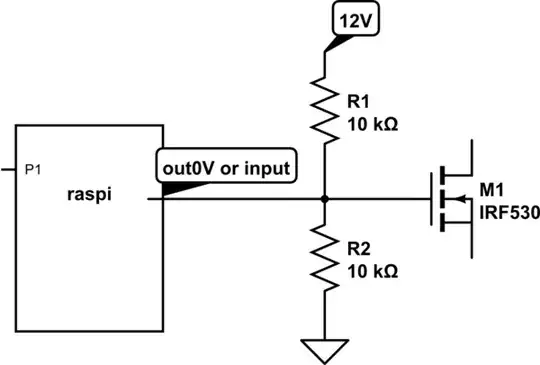i am running a low side switch with the 3.3V gpio output of the pi, and for the particular transistor i’m using (irf520 ) the 3.3V is barely enough to turn it on - is there some clever positive feedback i can use to force the transistor ‘very on’ when on and off when off?
How abt this, I put the gpio into high-impedance input mode to turn transistor on, and set output=0 to turn transistor off. current into gpio pin when output=0 is 1.2mA which i suppose is ok. Is 12V after 10Kohms ok on a raspi input pin?

simulate this circuit – Schematic created using CircuitLab
